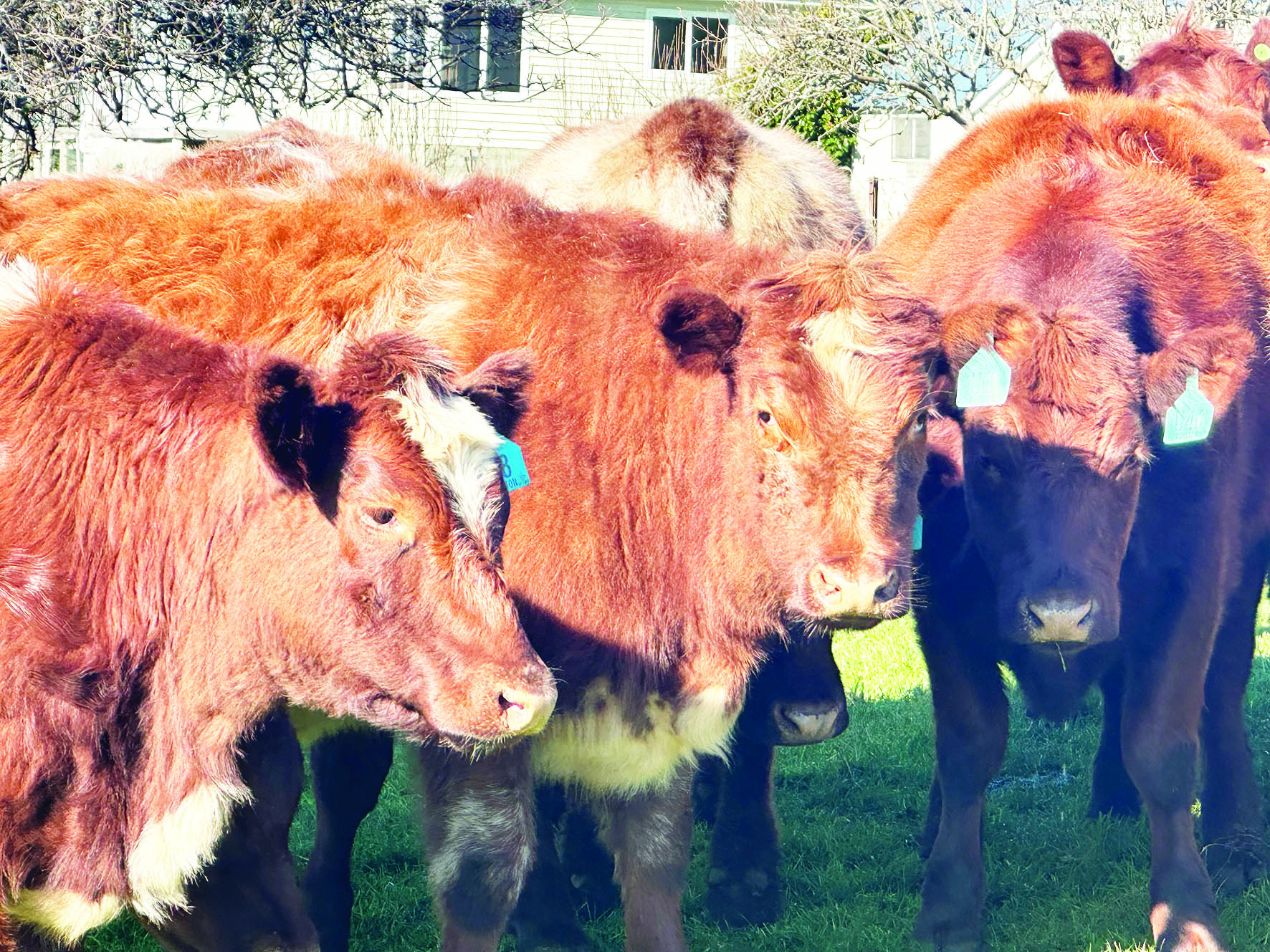Woodiwiss family’s winning ways with Shorthorn cattle

WHEN it comes to carcass quality, Reg and Rebecca Woodiwiss are certain Shorthorns are hard to beat.
The couple entered a team of their homebred shorthorns into this year’s Circular Head Carcass Competition held at the Stanley Show and a shorthorn steer from their team of three was awarded the Highest Scoring animal in the carcass section.
They also won the Yearling class carcass award and the Rex Frankcombe Memorial Trophy.
After that their team was also entered in the national carcass competition held in conjunction with the Beef Australia event at Rockhampton.
There they took out second place in the pasture fed pen of three heavy trade chiller steers or heifers class from 280-360kg class.
Mr Woodiwiss said they were thrilled to have placed second in the contest against 25 teams of pasture fed pens of three from the across the country.
“It’s interesting because you have to enter a month before they were processed at Stanley, so you can’t get them processed and then pick your best ones,” Mrs Woodiwiss said.
“One of the other challenges is the evenness of the group. So there were two bonus points if the carcasses were within five kilos and ours fell into that which I thought was pretty amazing to be able to do in some ways.”
While the couple have been regular competitors in the Sheffield School carcass competition this was the first time they had decided to enter their cattle at Stanley as a way to promote the breed.
“We knew Rockhampton was coming up so the aim was to do both competitions, but we didn’t have high expectations,” Mrs Woodiwiss said.
“We just wanted to get the Shorthorns out there and get them into a different area.”
Mr Woodiwiss said their aim was to highlight the breed’s carcass attributes.
“We’ve done fairly well at Sheffield over the years but to win at Circular Head and then get a second at Rockhampton was really good. Because we run a fair few cows and bulls and replacement heifers, we only usually keep a handful for the competitions.”
The couple started their Royston Shorthorn in about 2010 after they purchased heifers out of the Dunroan Stud production sale.
At the time they were breeding Salers, but they decided to switch breeds and it is a decision they do no regret.
“We’ve just found it doesn’t take much to get them up from store to fat and they’re easy doers,” he said.
Mrs Woodiwiss said they spend considerable time working out their breeding program and joinings each season.

Their focus is on balancing carcass traits like marbling, rib eye area and fats while still maintaining maternal traits such as calving ease and milk production.
“I think the results we’re getting now, by using the data available with our EPDs (Expected Progeny Difference) with our joinings, we can see that starting to come through. We’ve aimed at this and now we’re seeing that happening with what we’re getting on the ground,” she said.
Mr Woodiwiss said while they use breeding data, visual assessment and making sure their cattle have correct conformation is crucial.
“I think personally you’ve got to look at everything,” he said.
Data collection in their herd is a big part of their stud operation.
This includes weighing every calf calf at birth, collecting weaning and yearling weights and scanning for intramuscular fat eye muscle area and rib and rump fat of their yearling cattle along with genomic testing.
They have 100 Shorthorn cows in the stud, which are run on their property at Sunnyside.
The herd is split calving between autumn and spring which allows them to have bulls at different ages for sale.
Mr Woodiwiss said the breed has a lot to offer when it comes or commercial beef production.
He said while good feeding plays a significant role in producing top quality cattle, genetics also play a major role.
“Everyone says its more about what you put down their neck and I used to think that too, but there’s no point giving heaps of feed to a crap animal,” he said.
“Genetics does play a big role and you need cattle with potential to grow out really well and then if you feed them well you get the results.”
The couple sell bulls to clients across the state as well as the Bass Strait Islands and more recently some have also gone into the mainland.
While the lower beef prices are having an impact on bull demand across the industry, Mr Woodiwiss said they are still selling bulls regularly.
Mrs Woodiwiss said the colour variations within the Shorthorn breed is something they really enjoy.
“Calving time is really enjoyable because you’re not just thinking is it a bull or a heifer, it’s also what colour is it,” she said.
After their recent competition success, the couple say they are now planning to enter some of their cattle in the Stanley competition next year

Add new comment